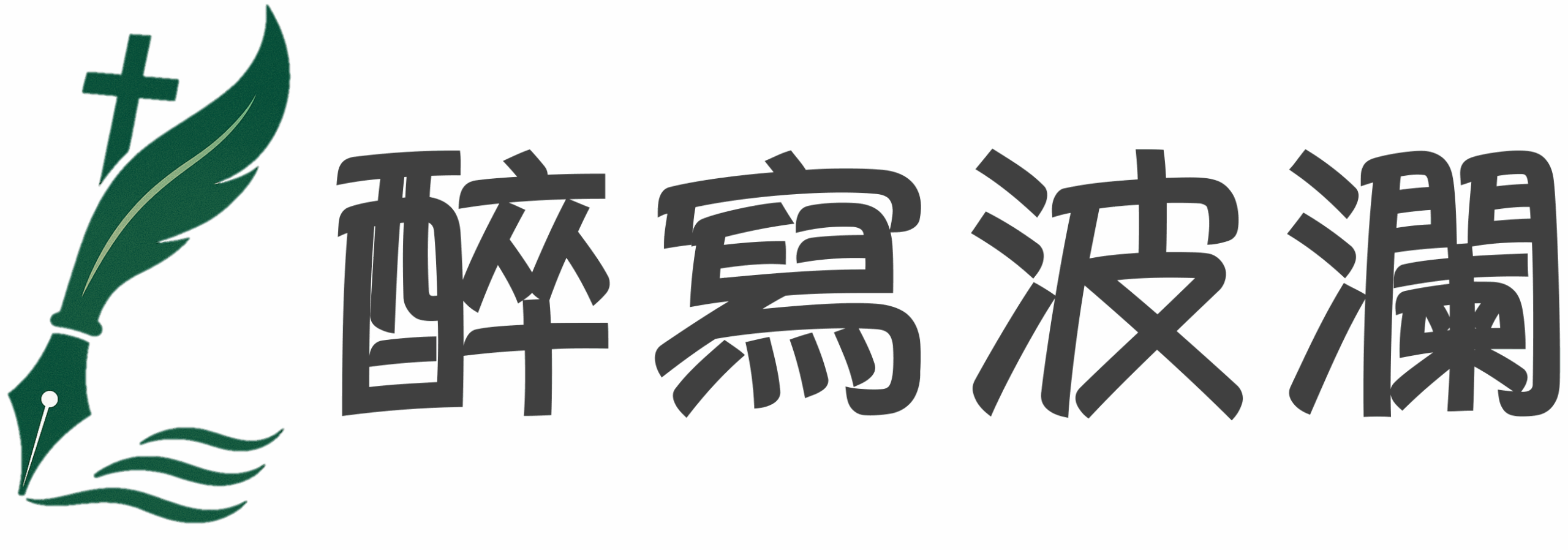首先必须澄清,《星条旗永不落》(Stars and Stripes Forever)并不是美国国歌。
中国人把《国条旗永不落》当作美国国歌,就像中国人把国会大厦当作白宫。
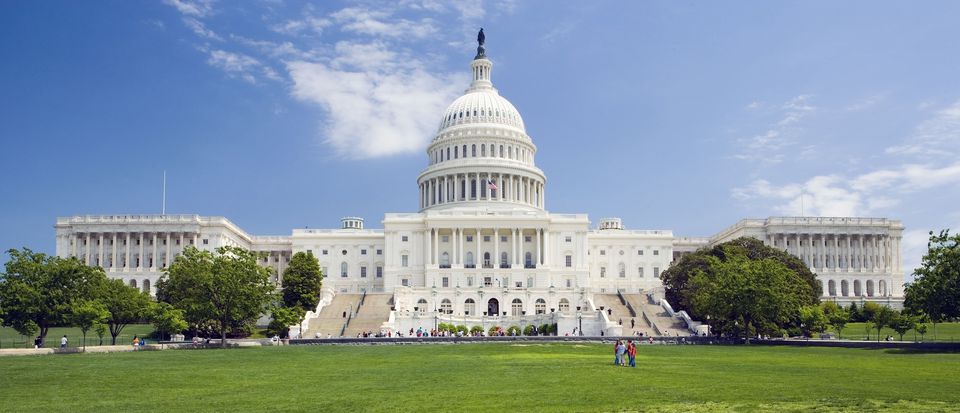
国会大厦
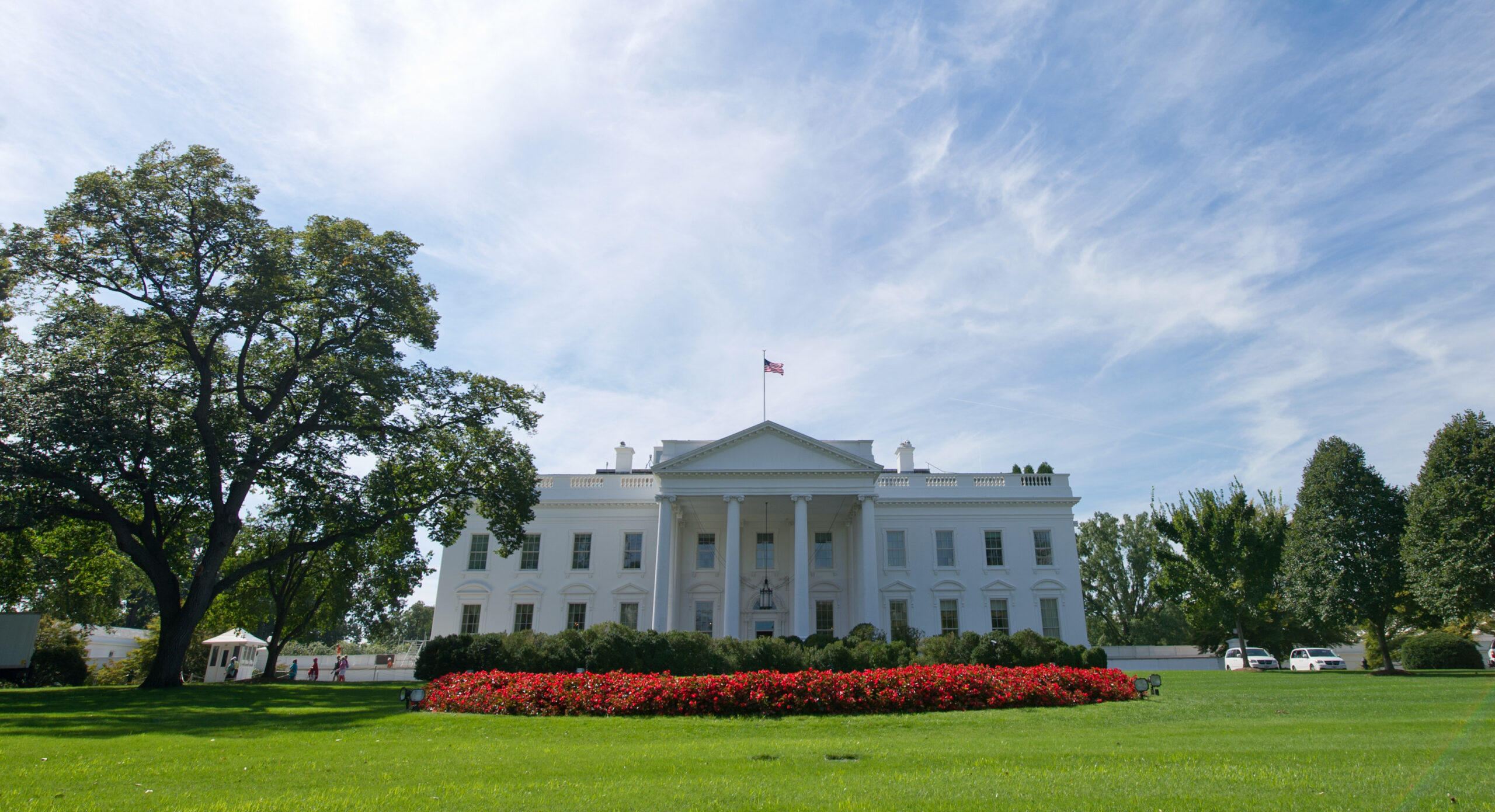
白宫
中国人为什么把国会大厦当作白宫?原因不甚清楚。或许是因为,白宫只是一个小小的white house,不符合官本位的中国人对“总统府”的想象。很多模仿“美国白宫”的中国大楼,山寨的都是美国国会大厦,也算是天下搞笑之最了。
中国人把《国条旗永不落》当作美国国歌,据说是有一个明确的起因:1972年尼克松总统访华时,军乐团演奏的是《星条旗永不落》。闭关锁国太久的中国人,以为这就是美国国歌,并且此说流传甚广,许多中国老百姓也跟着以讹传讹,网络上甚至“确认”《星条旗永不落》就是美国国歌。

《星条旗永不落》创作于1896年,一般被认为是John Philip Sousa的作品。它在美国的地位很高,往往被用于大型群众游行活动等场合。1987年12月,美国将《星条旗永不落》确定为“国家进行曲”。但是无论如何,《星条旗永不落》并不是美国国歌。
真正的美国国歌叫做《The Star-Spangled Banner》,一般译为《星条旗》、《星光灿烂的旗帜》或《星条旗之歌》。
不过更早之前,美国国歌并不是《星条旗之歌》,而是《My Country, ‘Tis of Thee》。它的旋律与英国国歌几乎一模一样,只是歌词有所不同。1931年《星条旗之歌》才被确定为美国国歌,取代了《My Country, ‘Tis of Thee》。
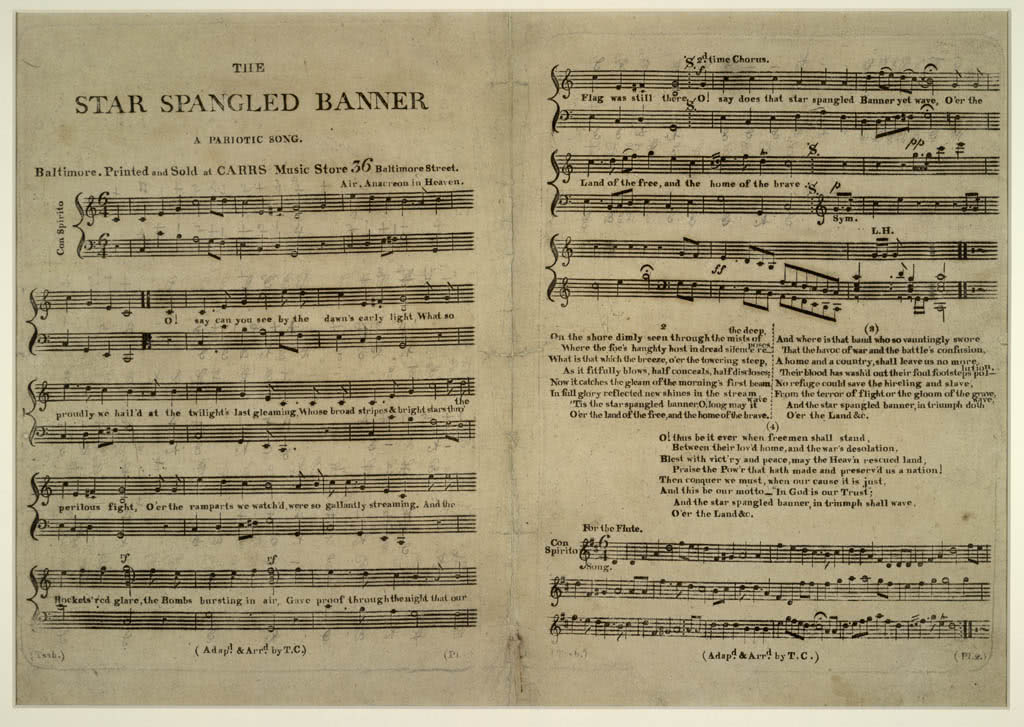
《星条旗之歌》起源于第二次美英战争。这场战争十分“乌龙”,尽管美国人主动宣战,却并没有做好准备,战争表现非常糟糕。例如,在底特律战役中,美国守军2500人,竟然一枪不发就就向700名英军投降了。后来英军打败拿破仑,大部队转战美国时,用区区4000人就轻取了美国首都华盛顿,把白宫和国会大厦等著名建筑统统烧毁(所以它们后来才刷成今天的白色)。
英军火烧华盛顿之后,进攻巴尔的摩。1814年9月13日,35岁的美国律师弗朗西斯·斯科特·凯伊(Francis Scott Key)亲眼目睹了英军进攻麦克亨利要塞(Fort McHenry),密集的炮弹像雨点般倾泻而下。
当时,凯伊正与英国人谈判,要求释放美国俘虏。英国人一恼怒,就他关在了一艘离岸八英里的军舰上。夜幕降临,大雨如注的天空被炮火染成血红。凯伊后来说:“孕育万物的大地仿佛已然裂开,燃起一片硫磺烈火,喷吐出枪林弹雨。”
凯伊沮丧地觉得英军即将获胜,心里默默祈祷美军能够坚守。然而第二天早上,当硝烟被黎明的曙光驱散时,凯伊看到麦克亨利要塞上星条旗仍然在高高飘扬。他他眼前的情形深深打动,心潮澎湃、思如泉涌,挥笔写就了《星条旗之歌》。
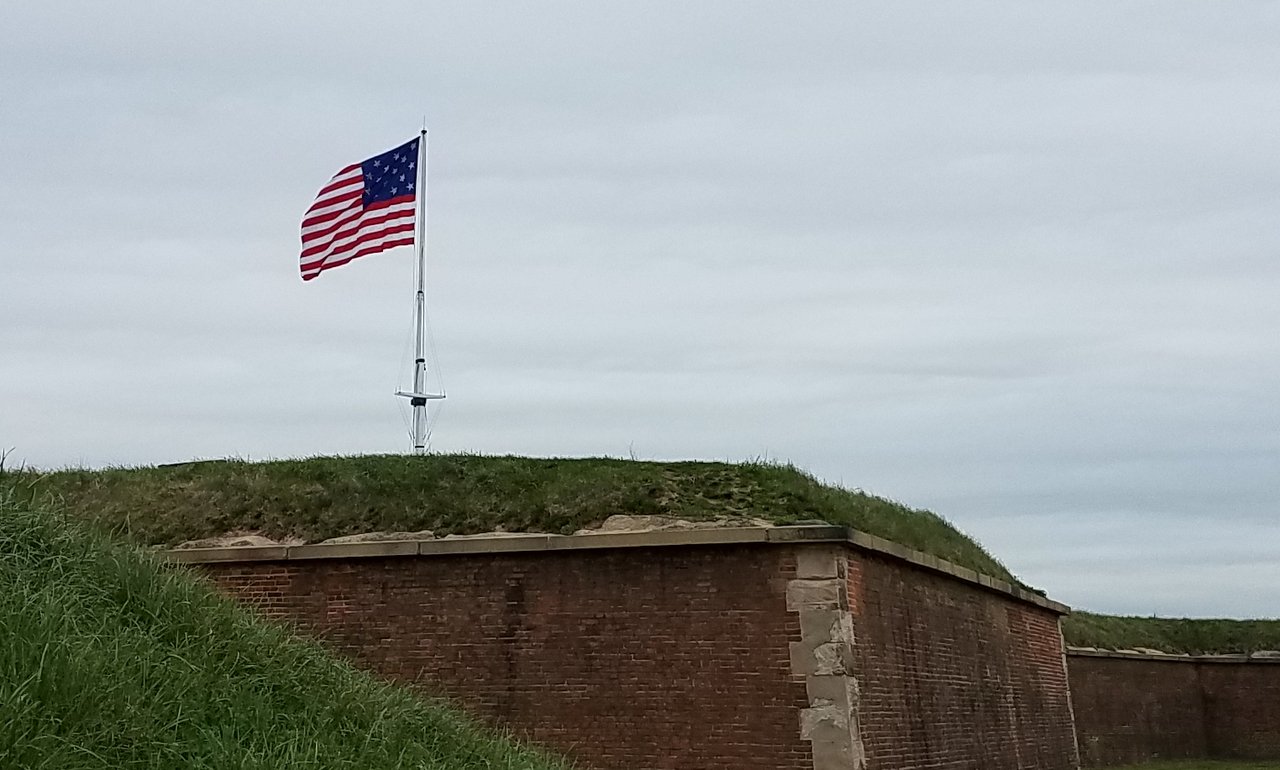
麦克亨利要塞上依旧飘扬着星条旗
[空]
Ⅰ
O say can you see, by the dawn’s early light,
What so proudly we hailed at the twilight’s last gleaming,
Whose broad stripes and bright stars through the perilous fight,
O’er the ramparts we watched, were so gallantly streaming?
And the rockets’ red glare, the bombs bursting in air,
Gave proof through the night that our flag was still there;
O say does that star-spangled banner yet wave
O’er the land of the free and the home of the brave?
[空]
Ⅱ
On the shore dimly seen through the mists of the deep,
Where the foe’s haughty host in dread silence reposes,
What is that which the breeze, o’er the towering steep,
As it fitfully blows, half conceals, half discloses?
Now it catches the gleam of the morning’s first beam,
In full glory reflected now shines in the stream:
‘Tis the star-spangled banner, O long may it wave
O’er the land of the free and the home of the brave.
[空]
Ⅲ
And where is that band who so vauntingly swore
That the havoc of war and the battle’s confusion,
A home and a country, should leave us no more?
Their blood has washed out their foul footsteps’ pollution.
No refuge could save the hireling and slave
From the terror of flight, or the gloom of the grave:
And the star-spangled banner in triumph doth wave,
O’er the land of the free and the home of the brave.
[空]
Ⅳ
O thus be it ever, when freemen shall stand
Between their loved homes and the war’s desolation.
Blest with vict’ry and peace, may the Heav’n rescued land
Praise the Power that hath made and preserved us a nation!
Then conquer we must, when our cause it is just,
And this be our motto: ‘In God is our trust.’
And the star-spangled banner in triumph shall wave
O’er the land of the free and the home of the brave!
[空]
壹
噢,说吧!你可看见,从晨曦的曙光中,
让我们对着阴暮仅余一道光自豪地欢呼,
激战过后,那寛阔的条纹和明亮的星星,
依然英勇飘扬,在我军堡垒上?
火箭的红色闪焰,半空的爆炸,
皆见证了,国旗彻夜安好无缺;
噢,说吧,星条旗仍高高飘扬在
这自由国土,勇者的家园之上?
[空]
贰
穿透稠密的浓雾,隐隐约约望见对岸,
高傲的敌人正于,恐惧的寂静中潜伏,
此为何物也,竟于峻崖峭壁之上,
微风吹拂著,而可随之半隐半现?
现在它身上,持着晨曦第一道光,
满满的荣耀,散发出闪耀的光芒;
这就是星条旗,愿它长久飘扬在
这自由国土,勇者的家园之上。
[空]
叁
都到哪里去了,信誓旦旦的人们?
他们向往的是能在战争中幸存,
家乡和祖国,不要抛弃我们。
他们自己用血,洗清肮脏的脚印。
那些奴才、佣兵,没有地方藏身,
逃脱不了失败和死亡的命运。
但是星条旗却将要继续飘扬在
这自由国土,勇者的家园之上。
[空]
肆
噢,当人民能为自由站于他们所爱的家园,
及战争的废墟之中,星条旗因而永恒不灭。
蒙胜利和平的祝福,愿这得天堂救赎的土地
称颂著那股,能造就及保护我们国家的力量!
当正义属于我方之时,我们非胜不可
这意味着我们的格言,”我们信仰上帝”
这胜利的星条旗将永远飘扬在
这自由国土,勇者的家园之上!
[空]
[空]
凯伊将诗句给他的内弟、麦克亨利要塞民兵队伍的司令官约瑟夫·尼科尔森(Joseph H Nicholson),后者发现诗的格律绝妙地符合了一首广受欢迎的英国小曲的曲调《阿克那里翁歌》(又名《天国的阿克那里翁》)。此曲原为英国贵族绅士俱乐部的会歌,而到19世纪初叶,它早已传到了大西洋的彼岸,在美国人尽皆知。
尼科尔森把此诗投寄给巴尔的摩的一家印刷厂,并以《麦克亨利要塞保卫战》为名分发。《巴尔的摩爱国者报》立刻转载了这首诗,并在几个星期之内,全国上下各大纸媒纷纷刊载。从此,凯伊的诗歌成为不朽之作,而它所赞美的那面旗帜也成为历史典藏,名垂千古。
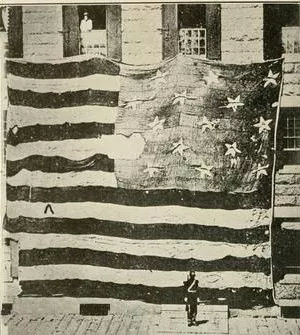
麦克亨利要塞当年飘扬的星条旗,
收藏于史密森学会(Smithsonian Institution)博物馆
1889年,美国海军正式采用《星条旗之歌》。到1916年,它已经非常流行,市面上涌现出了几种不同的演唱版本。于是,威尔逊总统要求联邦教育部拿出官方版本。经过5位音乐家的共同努力,标准版本的《星条旗之歌》1917年12月在卡内基音乐厅。威尔逊总统规定《星条旗之歌》在军队及其他合适的场合演奏。1931年3月4日,胡佛总统签署国会法案,《星条旗之歌》正式确立为美国国歌。
这个看上去很近的日期,可能让很多人吃惊。事实上,早在1918年4月10日,国会议员林西克姆就提出法案,希望正式承认《星条旗之歌》为国歌,但未获通过。但到1922年,美国人还在为该不该设立国歌而争论不休。当年6月11日,《纽约论坛报》刊登了一副醒目的巨型的广告:“《星条旗之歌》永远不可能成为我们的国歌!”它认为,这支歌曲节奏猛烈而拗口,永远无法表达出美国的精神理想,国会永远不会将一支表达最低品质情感的歌曲作为合法的国歌。1929年,林西克姆第6次重复他的提案。当年11月3日,漫画家李普利写道:“信不信由你,美国没有国歌!”
1930年,退伍军人协会发起请愿,要求将《星条旗之歌》确定为美国国歌,获得500万人签名。1930年1月31日,该请愿被递交至众议院,众议院在当年、参议院于次年3月3日通过了该法案,而胡佛第二天就予以签署,认可《星条旗之歌》作为美国国歌。
正是在1931年,美国股票市场崩盘两年之后,美国人亟需重燃信念之时,“美国梦”成为全国性的口号,《星条旗之歌》成为美国国歌。
《星条旗之歌》跨越了19个半音,以演唱难度高而著称,所以尽管它有四组歌词,但现今几乎只唱第一组歌词。
与《星条旗之歌》不同,《星条旗永不落》的歌词是这样的:
[First Strain]
Let martial note in triumph float
And liberty extend its mighty hand
A flag appears ‘mid thunderous cheers,
The banner of the Western land.
The emblem of the brave and true
Its folds protect no tyrant crew;
The red and white and starry blue
Is freedom’s shield and hope.
[空]
[Second Strain]
Other nations may deem their flags the best
And cheer them with fervid elation
But the flag of the North and South and West
Is the flag of flags, the flag of Freedom’s nation.
[空]
(repeats) Other nations may deem their flags the best
And cheer them with fervid elation,
But the flag of the North and South and West
Is the flag of flags, the flag of Freedom’s nation.
[空]
[Trio]
Hurrah for the flag of the free!
May it wave as our standard forever,
The gem of the land and the sea,
The banner of the right.
Let despots remember the day
When our fathers with mighty endeavor
Proclaimed as they marched to the fray
That by their might and by their right
It waves forever.
[空]
[Repeat of the First Strain]
Let eagle shriek from lofty peak
The never-ending watchword of our land;
Let summer breeze waft through the trees
The echo of the chorus grand.
Sing out for liberty and light,
Sing out for freedom and the right.
Sing out for Union and its might,
O patriotic sons.
[空]
[Grandioso]
Hurrah for the flag of the free.
May it wave as our standard forever
The gem of the land and the sea,
The banner of the right.
Let despots remember the day
When our fathers with mighty endeavor
Proclaimed as they marched to the fray,
That by their might and by their right
It waves forever.
[空]
[第一段]
让胜利的音符漂浮
自由扩展了它强大的手
一个旗帜出现在雷鸣般的欢呼声中,
西部的旗帜。
勇敢与真实的象征
它的褶皱保护没有暴君的船员;
红,白,蓝
是自由的盾牌和希望。
[空]
[第二段]
其他国家认为他们的旗帜是最好的
他们的喜悦和欢乐
但北境和南部和西部的国旗
国旗的旗帜,自由民族的旗帜。
[空]
(重复)其他国家可以认为他们的旗帜是最好的
他们的喜悦和欢乐,
但北境和南部和西部的国旗
国旗的旗帜,自由民族的旗帜。
[空]
[三]
对自由的旗帜欢呼!
愿它永远成为我们的标准,
陆地与海洋的宝石,
右边的旗帜。
让暴君还记得那一天
当我们的父亲以巨大的努力
他们游行到战斗时宣布
他们的权利和权利
它永远荡漾。
[空]
[重复第一段]
让鹰从高耸的山峰尖叫
永无止境的口号我们的土地;
让夏天的微风飘荡在树
合唱的回声。
为自由和光明歌唱,
为自由和权利歌唱。
为联盟和它的力量歌唱,
爱国的儿子。
[空]
[雄伟]
对自由的旗帜欢呼。
愿它永远成为我们的标准
陆地与海洋的宝石,
右边的旗帜。
让暴君还记得那一天
当我们的父亲以巨大的努力
他们游行到战斗时宣布,
他们的权利和权利
它永远荡漾。
